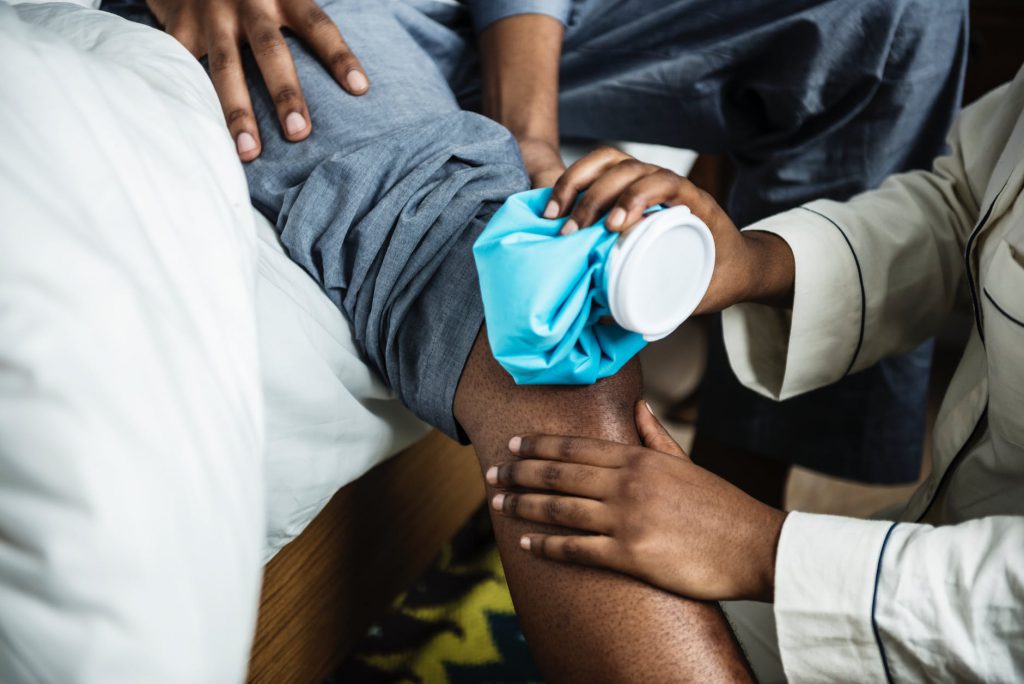As women get older, menopause is something they will face. The average age of onset is 51 to 52 years old. However, for about five percent of women, it starts between 40 and 45 years of age. About 1.3 million women in the United States become menopausal every year.
There are several signs of menopause, and some can be challenging to deal with. Joint pains are one of the potentially challenging symptoms. Learning more about why they occur and how to prevent or treat joint pains naturally can help to improve your comfort. Most women find changing their diet, finding exercise options, switching to a lightweight belt, or new kinds of shoes could help.
What Are the Causes of Joint Pains During Menopause?
“Joint and bone health rely partially on estrogen. When you go into menopause, estrogen levels drop. This may result in more swelling which translates to more pain.”
Menopausal joint pain ranges from mild to severe. For some women, it can have a significant impact on their flexibility and mobility. The pain tends to improve as you move around, and it is usually at its worst in the morning.

This issue is sometimes referred to as “menopausal arthritis.” The joints that experience the highest impact are most often affected, such as your knees and hips. Running and other high-impact exercises may worsen your pain while rest can ease it.
Joint and bone health rely partially on estrogen. While experts are unsure about exactly how this hormone impacts your joints, the theory is that it plays a role in minimizing joint swelling. When you go into menopause, estrogen levels drop. This may result in more swelling which translates to more pain.
Estrogen also plays a role with fluid regulation in your body. As estrogen drops, you can become dehydrated easier. With prolonged dehydration, uric acid may accumulate in your joints, resulting in painful inflammation.
How to Prevent or Treat Joint Pains Naturally
“Acupuncture may help to alleviate joint pain by restoring balance and rerouting energies in your body.”
There are several natural remedies that you can use to alleviate your menopausal joint pain. Learning more about how they work can help you to decide which ones will be the most beneficial for you.
1. Cold and Hot Therapy

Acute inflammation, pain and swelling respond well to cold. If a particular joint is giving you trouble, apply cold for 15 to 20 minutes. When your joints are stiff, heat is a good choice. Use moist heat to loosen your joints to reduce pain and stiffness.
2. Acupuncture
Acupuncture may help to alleviate joint pain by restoring balance and rerouting energies in your body. A certified acupuncturist inserts very fine needles into specific points on the body. They remain in place for up to several minutes. In some cases, heat or electricity is applied to the needles for added stimulation.
“Research shows that turmeric modifies immune system response and has anti-inflammatory properties.”
3. Fatty Acids
Omega-3 fatty acids are recommended for reducing joint pain and stiffness. They help to alleviate inflammation by reducing the production of cytokines, eicosanoids and other inflammatory substances. Research shows that with moderate intake of these acids, inflammation throughout the body decreases. Gamma-linolenic acid is another fatty acid that may benefit joint pain. It works similar to omega-3 by reducing inflammation.
4. Turmeric

Turmeric contains a compound called curcumin. This compound has been shown to block inflammatory enzymes and cytokines, including cyclooxygenase-2 (COX-2). Research shows that this plant modifies immune system response and has anti-inflammatory properties. You can choose to take capsules that contain turmeric, add it to food or drink it as a tea.
5. Bromelain
Bromelain is found in pineapples. It is a collection of several active compounds, including proteases and proteinases, both of which break down proteins. Some research shows that bromelain has anti-inflammatory effects due to its ability to decrease certain inflammation-related compounds in the body. It may also decrease transforming growth factor beta, a compound associated with inflammation in certain types of arthritis.
6. Devil’s Claw
Devil’s claw is a plant from the sesame family. It contains multiple compounds, including harpagoside and other iridoid glycosides. Harpagoside has been shown to reduce inflammatory responses in preliminary studies.
Once you start experiencing the signs of menopause, it is time to start creating plan to help you deal with them. There are viable methods for how to prevent or treat joint pains naturally. If you take any other medications, talk to your doctor before using any herbs or supplements. This helps to ensure safety with the combination of treatments that you choose.
Source & Reference:





















